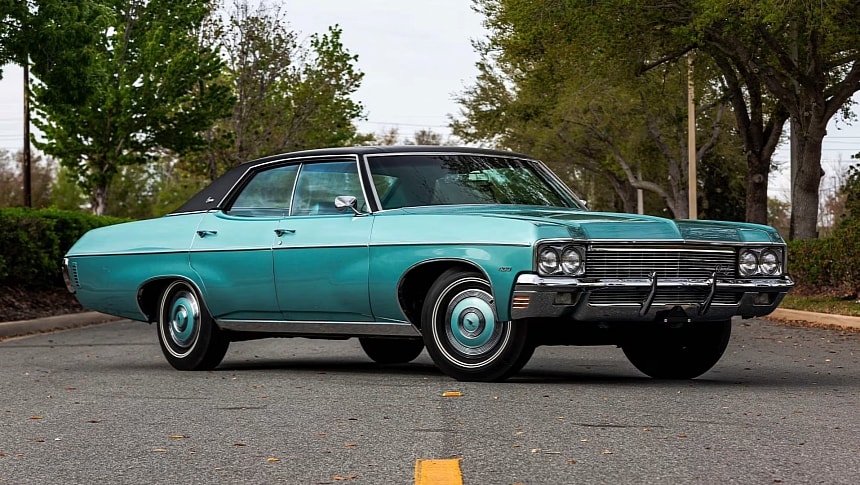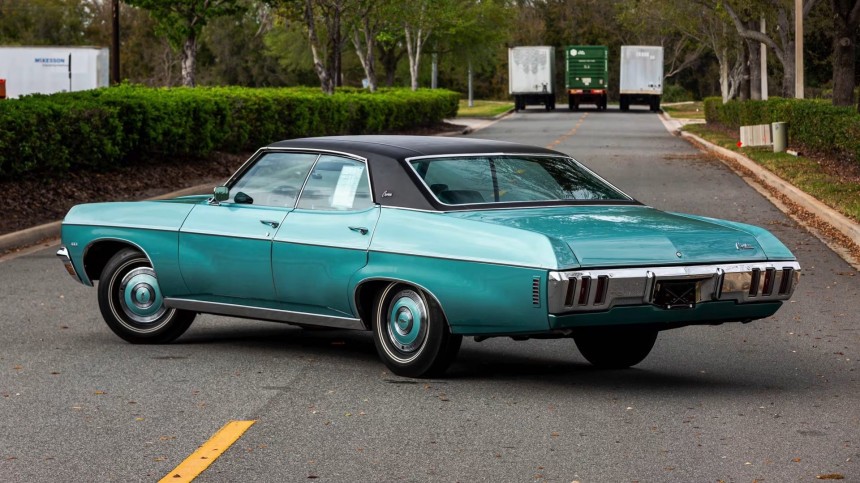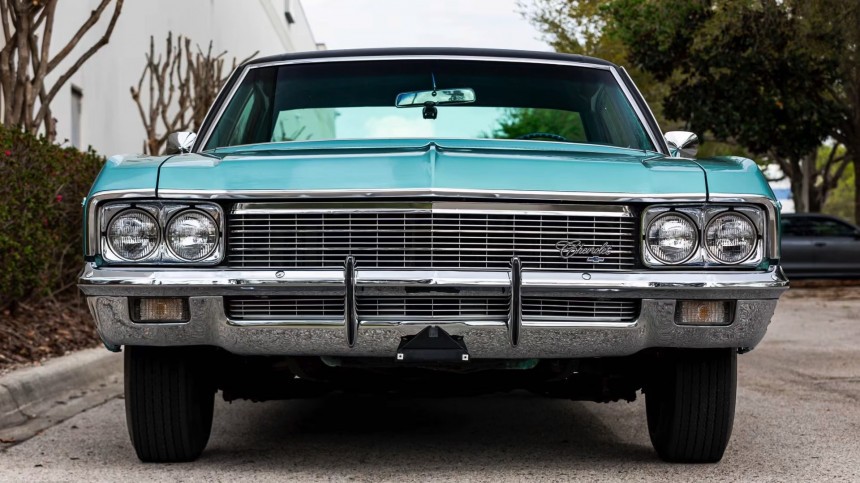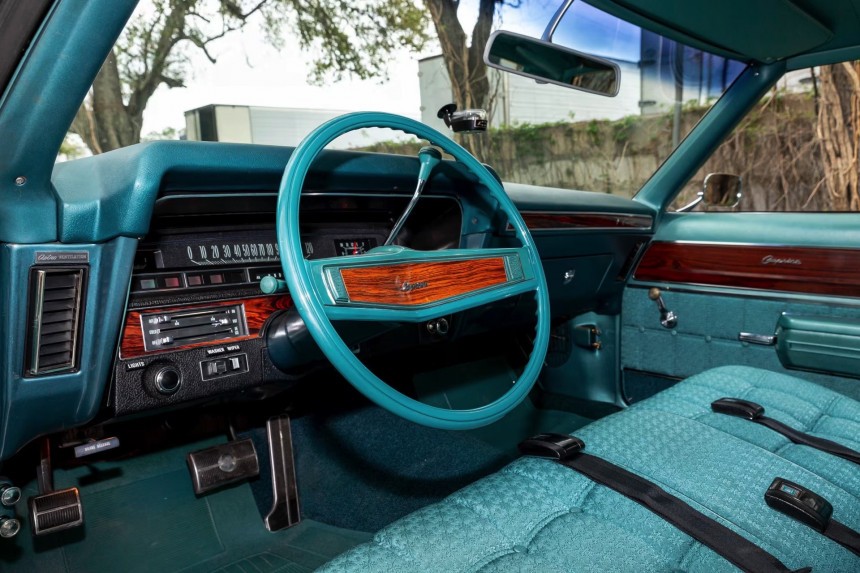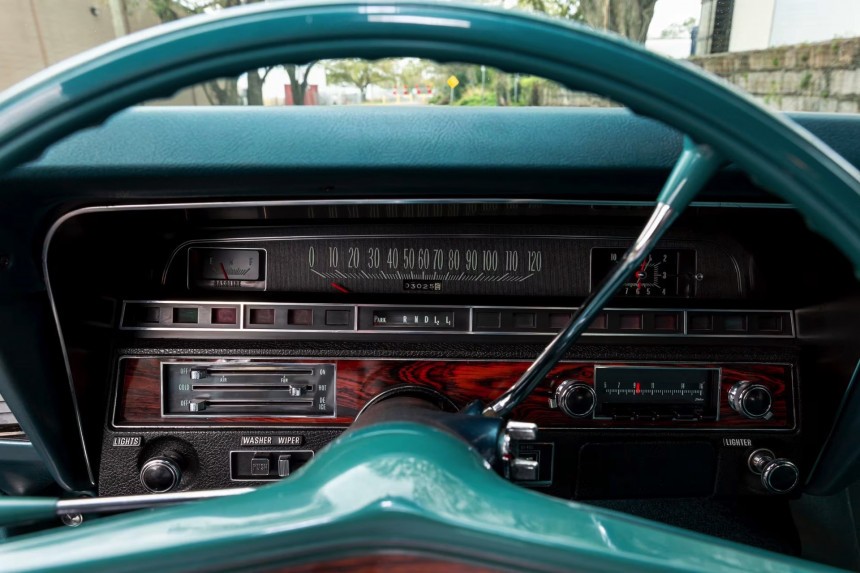Excuse me if I sound utterly excited, but that's exactly how I feel after coming across this fantastic Caprice. As a huge Impala fan, I absolutely adore the Caprice, but I have never had the chance to explore such a fascinating survivor.
While I'm sure most of you are specifically interested in what makes this Caprice so impressive that it blew my mind, I can't help but remind the audience that this nameplate was born in 1965 as an Impala version.
Chevrolet originally offered the Caprice as a sport sedan, but the company then tried to repeat the Impala's success with a similar approach in 1966. Like the Impala, which graduated from a Bel Air version to a stand-alone series a year after launch, the Caprice gained series status in 1966, rapidly generating enthusiasm (and, at some level, cannibalizing the Impala) in the Chevy customer base.
The Caprice sold 181,000 units in its first year as a stand-alone series, with production dropping to 124,500 units in 1967.
It didn't mean the Caprice was becoming less compelling, but the car was subject to the same changes as the rest of the full-size Chevrolet lineup. It received a major refresh in 1967 and 1969, with the latter also including notable updates in the engine offering. The base engine was now a 327ci small block, while the top configuration came with a 427ci big block.
The 1970 release was the last year of the generation, and for many people, it was the last "genuine" Caprice. Chevrolet substantially redesigned the car, stepping away from its original body style and design, turning the Caprice into a significantly larger boat.
Here is the most beautiful Caprice you'll ever see.
This 1970 Caprice has everything you'd ever wish, starting with the perfect color, continuing with its condition, and ending with an extraordinary number on the clock.
Let's take everything one at a time to explain just how fabulous this Caprice was, is, and will hopefully continue to be after it finds a new home at the upcoming July 12 Mecum auction.
The Caprice rolled off the assembly lines with a turquoise-on-turquoise combo. The Misty Turquoise looks spotless, and the cabin is flawless. I know what you think because I thought the same thing when I first spotted this Caprice: it's a restored model, so it makes sense to look this good. Nope.
This Caprice is a time capsule, a survivor, an unrestored, unaltered, and untouched 1970 sedan. It's the same Caprice that it was when it rolled off the assembly lines, retaining everything in a condition that could easily rival a brand-new car now landing in the dealership.
The vehicle has always been parked in a heated garage. It was driven home by its first owner (it's unknown how many people owned this Caprice) and immediately parked in a climate-controlled garage where it easily protected its tip-top shape. The black vinyl roof is still in incredible shape, like everything else on the car.
The engine under the hood is the one installed by Chevrolet before it left the factory. It's a 400ci unit with 265 horsepower paired with an automatic and still in flawless shape. We're not getting more specifics, but it's safe to assume it starts, runs, and drives beautifully.
The numbers on the clock are the next unbelievable tidbit on this time capsule. The mileage is just 3,025 miles, so it's very clear that this Caprice spent most of its time locked in a garage rather than on the road. The low miles and the condition confirm that this Caprice has no idea what rain and snow are, so whoever buys the car should park it in a heated garage – I'm certain that a collector will eventually get their hands on this Caprice. I'm also sure they know how rare this gem can be today.
As if all of these weren't enough, the Caprice also sells with original documents confirming the production dates, the selling price (it cost $4,427 when it was new – the Caprice carried a price tag of $3,527, and but all the extras, including the power steering, the Turbo Hydra-Matic transmission, and the radio significantly increased the price), and the available options. The auction will include the original dealer bill of sale and sales receipt, the window sticker, the Protect-O-Plate, and the owner's manual.
The car will go under the hammer next week, and it'll certainly be interesting to see how high the bidding goes. It's a mesmerizing Caprice that checks all the big boxes for a true collectible, as it's unrestored, completely original, unaltered, in tip-top shape, and with incredible numbers on the clock. I'll keep an eye on the auction and let you know how much it snags at the upcoming auction, and if you're interested in bidding, you can find all the auction details in the link in this paragraph.
Chevrolet originally offered the Caprice as a sport sedan, but the company then tried to repeat the Impala's success with a similar approach in 1966. Like the Impala, which graduated from a Bel Air version to a stand-alone series a year after launch, the Caprice gained series status in 1966, rapidly generating enthusiasm (and, at some level, cannibalizing the Impala) in the Chevy customer base.
The Caprice sold 181,000 units in its first year as a stand-alone series, with production dropping to 124,500 units in 1967.
The 1970 release was the last year of the generation, and for many people, it was the last "genuine" Caprice. Chevrolet substantially redesigned the car, stepping away from its original body style and design, turning the Caprice into a significantly larger boat.
Here is the most beautiful Caprice you'll ever see.
Let's take everything one at a time to explain just how fabulous this Caprice was, is, and will hopefully continue to be after it finds a new home at the upcoming July 12 Mecum auction.
The Caprice rolled off the assembly lines with a turquoise-on-turquoise combo. The Misty Turquoise looks spotless, and the cabin is flawless. I know what you think because I thought the same thing when I first spotted this Caprice: it's a restored model, so it makes sense to look this good. Nope.
The vehicle has always been parked in a heated garage. It was driven home by its first owner (it's unknown how many people owned this Caprice) and immediately parked in a climate-controlled garage where it easily protected its tip-top shape. The black vinyl roof is still in incredible shape, like everything else on the car.
The engine under the hood is the one installed by Chevrolet before it left the factory. It's a 400ci unit with 265 horsepower paired with an automatic and still in flawless shape. We're not getting more specifics, but it's safe to assume it starts, runs, and drives beautifully.
The numbers on the clock are the next unbelievable tidbit on this time capsule. The mileage is just 3,025 miles, so it's very clear that this Caprice spent most of its time locked in a garage rather than on the road. The low miles and the condition confirm that this Caprice has no idea what rain and snow are, so whoever buys the car should park it in a heated garage – I'm certain that a collector will eventually get their hands on this Caprice. I'm also sure they know how rare this gem can be today.
The car will go under the hammer next week, and it'll certainly be interesting to see how high the bidding goes. It's a mesmerizing Caprice that checks all the big boxes for a true collectible, as it's unrestored, completely original, unaltered, in tip-top shape, and with incredible numbers on the clock. I'll keep an eye on the auction and let you know how much it snags at the upcoming auction, and if you're interested in bidding, you can find all the auction details in the link in this paragraph.
